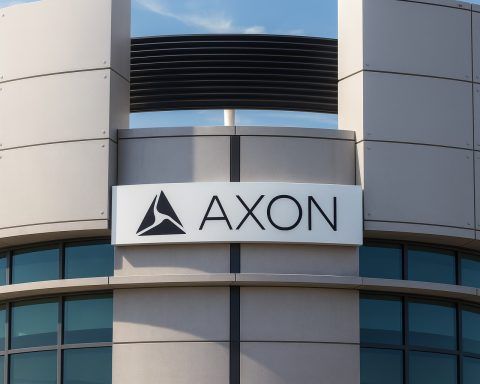- Brent ~$62, WTI ~$58 (Oct 14) – Crude benchmarks have tumbled to five-month lows amid volatile trading [1]. Monday’s rally (Brent $63.32) was erased by Tuesday’s slide (Brent $62.31) as markets digested conflicting news.
- Trade tensions drive swings – Oil plunged on threats of massive US tariffs on China (falling ~4% on Oct 10) [2]. A late-Oct Trump–Xi meeting on the horizon briefly spurred a Monday rebound [3], but new Chinese export controls and US sanctions on Oct 14 sent prices down again [4].
- OPEC+ stays cautious – On Oct 5 the OPEC+ group approved another modest 137,000 barrels-per-day November output hike [5]. Saudi Arabia had pushed for a much larger increase, reflecting its bid to regain market share, but ultimately Riyadh and Russia compromised on the smaller rise [6]. OPEC’s own report notes that planned output gains will cut next year’s supply deficit sharply [7].
- Glut warnings ahead – The IEA now sees a massive surplus by 2026: roughly a 4 million bpd oversupply as OPEC+ and other producers boost production [8]. It lifted its 2025 supply growth forecast to +3.0 mmbpd and trimmed demand growth to ~0.71 mmbpd [9]. The EIA likewise forecasts rising inventories and expects Brent to average ~$62 in Q4 2025 and plunge to ~$52 in 2026 [10].
- Demand growth falters – Global fuel demand is weakening. The IEA’s lower demand forecasts reflect a slowing economy, and Goldman Sachs warns US trade tariffs and soft data could shave roughly 0.8 mmbpd from its demand growth outlook [11] [12]. In the US, crude output is near record levels (≈13.6 mmbpd) [13], keeping a floor under global inventories.
- Geopolitics’ mixed impact – Middle East peace dampened the risk premium: Israel-Hamas Gaza ceasefire talks (hostages freed) briefly eased oil’s geopolitical premium [14]. Rystad Energy notes this could curb Houthi attacks and increase chances of an Iran nuclear deal [15]. But Ukraine war disruptions still support prices – late September’s drone strikes on Russian refineries sent Brent above $70 [16] – and Houthi-claimed attacks on shipping persist.
- Analyst caution – Experts say markets are “walking a tightrope”. The small OPEC+ hike “keeps a floor” under prices but doesn’t eliminate oversupply worries [17]. Oil traders are “skeptical” of new developments and “will wait for proof” of sustained peace or growth before betting on higher prices [18] [19]. In short, surging output and sluggish demand have offset most bullish news, suggesting oil’s 5-month lows could be a new plateau.
Trade War Volatility Hits Oil
Oil markets this week have been buffeted by the ebb and flow of US-China trade developments. On Oct 10, Trump’s threat of massive new tariffs on Chinese imports sent Brent and WTI tumbling over 4%, to lows not seen since May [20]. The sell-off reflected a broader shift to “risk-off” sentiment, as UBS’s Giovanni Staunovo noted that Trump’s announcement drove oil down [21]. However, reports that a Trump-Xi meeting was back on track (tentatively planned for late October in South Korea) sparked a relief rally on Monday (Oct 13). Brent jumped nearly 1% to $63.32 as Washington signaled de-escalation [22].
That rally was short-lived. By Tuesday (Oct 14), oil prices reversed course amid renewed trade friction. China’s widened export controls on high-tech materials and US moves to slap 100% tariffs on additional Chinese goods (effective Nov. 1) reignited fears of a new trade war [23]. Beijing even announced sanctions on US-linked companies, and both countries plan new port fees on shipping. These developments, along with the risk that Trump might cancel high-level talks, pushed Brent back down to $62.31 (a 1.6% drop) by mid-Tuesday [24]. In sum, the market is “still assessing” the cycle of rapprochement versus retaliation, with analysts saying any flirtation with reduced trade is currently the only force preventing an even steeper decline [25] [26].
OPEC+ Strategy: Modest Hike, Market Share Battle
OPEC+ used its early-October meeting to maintain a cautious stance on supply. The group agreed on Oct 5 to add just 137,000 barrels per day (bpd) in November – the same small increase as in October [27]. This continued the gradual unwinding of last year’s deep cuts, but by historical standards is a tiny boost (about 0.14% of global output) [28]. Saudi Arabia had lobbied for a much larger hike (up to ~548,000 bpd) to reclaim market share, while Russia favored sticking to the minimal rise due to its capped production under sanctions [29] [30]. The compromise highlights the delicate balancing act: OPEC leaders aim to regain sales without triggering a price crash.
In its official statement, OPEC+ framed the move as responding to “steady global economic outlook and healthy fundamentals” [31]. OPEC’s monthly report in mid-October echoed that caution, projecting only a “much smaller supply deficit in 2026” if planned production hikes proceed [32]. In other words, the cartel expects the market to lean into surplus unless demand surprises. Notably, OPEC itself still forecasts robust demand growth (around +1.3 mmbpd in 2025) [33], but acknowledges that if all supply plans materialize, oil inventories will swell. Daniel Hynes of ANZ observes that the ceasefire in Gaza merely shifted the market’s focus “back to the impending oil surplus” caused by the rollout of OPEC+ output increases [34].
Supply Surge and Slowing Demand: Forecasts of Glut
Key global agencies warn that supply growth is outpacing demand, a bearish backdrop for prices. The IEA’s October report expanded its outlook for 2025 supply growth to +3.0 mmbpd (from +2.7 previously) and expects another +2.4 mmbpd in 2026 [35]. At the same time, it trimmed demand growth to only ~710,000 bpd for 2025 [36]. In effect, the IEA now projects an annual surplus of roughly 4.0 mmbpd in 2026, equal to nearly 4% of world oil demand [37]. That surplus projection far exceeds many estimates and would be the largest in years.
The U.S. Energy Information Administration (EIA) similarly foresees inventories rising through 2026. Its Short-Term Energy Outlook (Oct 7 release) forecasts Brent at an average of only $62/bbl in Q4 2025 and down to about $52/bbl in 2026 [38]. The EIA notes that non-OPEC supply (led by a record U.S. output) will keep climbing: U.S. crude production was a record 13.6 mmbpd in July 2025 and is now expected to average ~13.5 mmbpd through 2026 [39]. Even as U.S. shale slows once prices fall, overall global inventory builds are anticipated to continue.
Goldman Sachs emphasizes that downside risks to demand may exacerbate the oversupply. Its latest note (Aug. 2025) kept the Q4 Brent forecast at $64 but warned that rising tariffs, sanctions (e.g. on Iran and Russia), and weak U.S. data could slice ~0.8 mmbpd off its demand-growth projection [40]. Indeed, Goldman’s economists now think a U.S. recession is a higher probability. In short, the consensus is tilting toward ample supply and sluggish consumption in the year ahead – a classic recipe for lower prices.
Geopolitical Drivers: From Ceasefire to Conflict
Geopolitics have had a mixed effect on oil risk premiums. The news of a Gaza ceasefire reduced one major source of uncertainty. On Oct 9, after Israel and Hamas agreed to halt fighting and swap hostages, oil actually fell (Brent -1.6% to $65.22) [41] because traders anticipated a waning Middle East premium. Rystad Energy’s Claudio Galimberti noted the peace deal’s “wide-ranging” implications: it could curb Houthi attacks on shipping and raise the odds of an Iran nuclear agreement [42]. In other words, the Middle East conflict risk appeared to be receding. However, markets have largely “voted with price” by remaining cautious, waiting for a durable ceasefire before assuming any big demand boost [43].
Meanwhile, Russian-Ukrainian tensions continue to bolster oil prices. Just weeks ago, renewed drone and missile strikes by Ukraine knocked out Russian refinery capacity, forcing Moscow to curtail diesel exports and extend gasoline bans [44]. Brent briefly jumped above $70 on those supply fears in late September [45]. Though those disruptions have eased somewhat, the possibility of escalation (including NATO responses to airspace breaches) keeps a floor under prices. In short, oil traders see that even if Middle East risk fades, other conflicts and sanctions can curtail supply – but thus far these factors have only offset bearish news rather than pushing oil sharply higher.
Market Perspectives: Awaiting Proof of Change
In the end, experts say oil markets are “walking a tightrope” between surplus fears and any bullish surprises [46]. The modest OPEC+ hikes have prevented outright collapse, yet have not satisfied hopes of a supply squeeze. As oil strategist Jorge León of Rystad put it, producers are trying to balance “maintaining stability” in prices with “clawing back market share in a surplus environment” [47]. Traders are likewise cautious: PVM analysts observe the market will only trade higher if it sees clear evidence of sustained geopolitical peace or global demand improvement [48] [49].
For now, the data points to continued volatility. Monday’s slide left Brent near its October lows just under $62 [50], and any further bounce depends on developments. Markets will watch the upcoming Trump-Xi meeting, the pace of U.S. shutdown and economic news, Chinese demand signals, and the OPEC+ compliance with quotas. With global inventories set to swell and growth slowing, many analysts expect oil to hover in a lower band until fundamental balances shift.
Sources: Reuters news reports and energy agency forecasts [51] [52] [53] [54] [55] [56] [57] [58], plus market analysis from TS2.tech [59] [60]. These authoritative sources provide the latest figures and expert commentary on Brent, WTI, OPEC/OPEC+ policy, demand forecasts, and geopolitical impacts on oil prices.
References
1. www.reuters.com, 2. www.reuters.com, 3. www.reuters.com, 4. www.reuters.com, 5. ts2.tech, 6. ts2.tech, 7. www.reuters.com, 8. www.reuters.com, 9. www.reuters.com, 10. www.eia.gov, 11. www.reuters.com, 12. www.reuters.com, 13. www.eia.gov, 14. www.reuters.com, 15. www.reuters.com, 16. ts2.tech, 17. ts2.tech, 18. www.reuters.com, 19. ts2.tech, 20. www.reuters.com, 21. www.reuters.com, 22. www.reuters.com, 23. www.reuters.com, 24. www.reuters.com, 25. www.reuters.com, 26. www.reuters.com, 27. ts2.tech, 28. ts2.tech, 29. ts2.tech, 30. ts2.tech, 31. ts2.tech, 32. www.reuters.com, 33. www.reuters.com, 34. www.reuters.com, 35. www.reuters.com, 36. www.reuters.com, 37. www.reuters.com, 38. www.eia.gov, 39. www.eia.gov, 40. www.reuters.com, 41. www.reuters.com, 42. www.reuters.com, 43. www.reuters.com, 44. ts2.tech, 45. ts2.tech, 46. ts2.tech, 47. ts2.tech, 48. www.reuters.com, 49. ts2.tech, 50. www.reuters.com, 51. www.reuters.com, 52. www.reuters.com, 53. www.reuters.com, 54. www.reuters.com, 55. www.eia.gov, 56. www.reuters.com, 57. www.reuters.com, 58. ts2.tech, 59. ts2.tech, 60. ts2.tech













